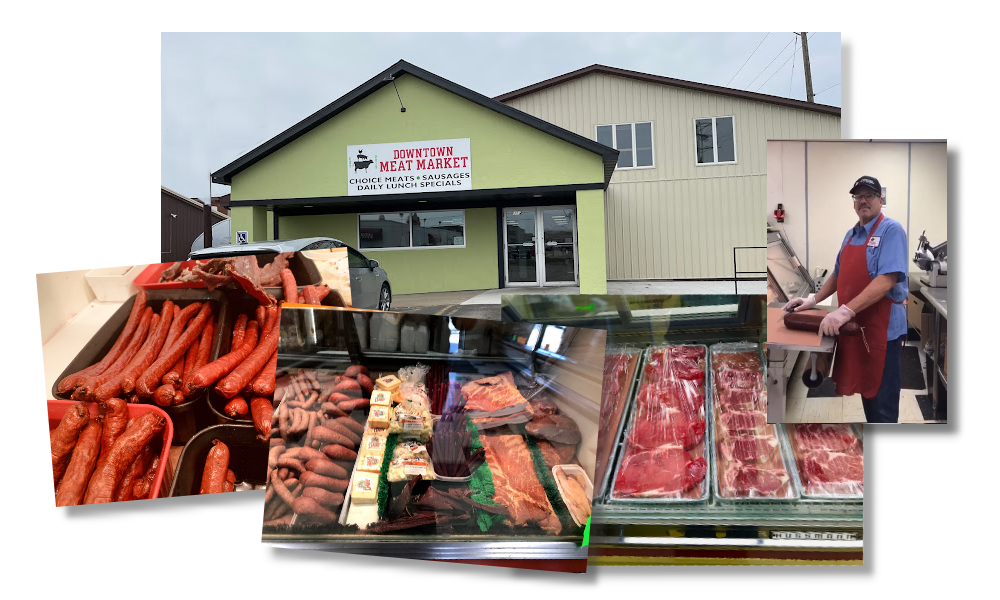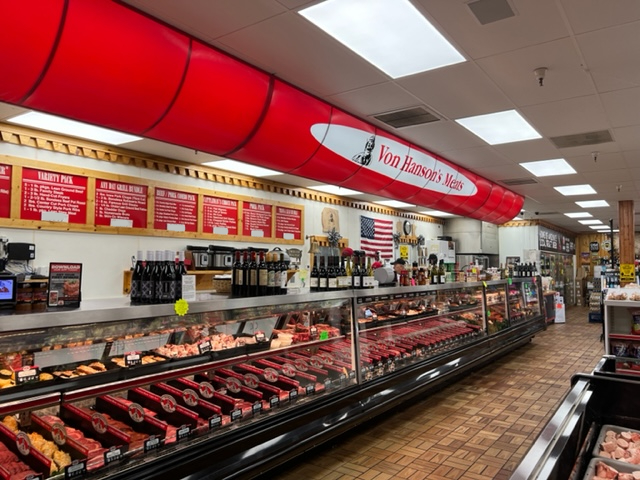Bagley Farms Meat Market Edwardsville IL: Your Go-To Destination for Regional Meat Selection
Bagley Farms Meat Market Edwardsville IL: Your Go-To Destination for Regional Meat Selection
Blog Article
Uncover the Art of the Butcher's Cut in a Modern Meat Market
In the ever-evolving landscape of modern meat markets, the butcher's cut has actually transcended its traditional origins, combining old-time workmanship with contemporary techniques. bagley farms meat market edwardsville il. Today's butchers are not simply cpus of meat; they are knowledgeable artisans who stress sustainability and honest sourcing. Their expertise in picking and preparing cuts tailored to specific culinary demands uses an exceptional eating experience. Yet, what truly sets the contemporary butcher apart is their capacity to forge a much deeper link in between customers and the beginnings of their meat. Exactly how do these masters equilibrium tradition with technology, and what ramifications does this have for the future of meat consumption?
Evolution of Butchery Methods

The mid-20th century saw butchery strategies better improved by clinical insights into muscle mass biology and meat aging, improving both inflammation and taste. Technologies like vacuum cleaner product packaging and refrigeration extended product shelf-life, permitting butchers to expand offerings and enhance high quality control. This duration likewise marked the increase of specific tools, such as band saws and meat slicers, which enhanced accuracy and efficiency in meat processing.
The 21st century has introduced electronic technology right into the butchery world. Electronic systems currently help in tracking animal provenance and enhancing cuts to meet certain customer choices. Furthermore, a revival in artisanal butchery has emerged, blending standard skills with contemporary knowledge to cater to consumers looking for ethical and lasting meat alternatives. This evolution highlights a dynamic interaction in between tradition and advancement, meeting contemporary needs while protecting the craft's heritage.

Understanding Meat Cuts

Comprehending the complexities of meat cuts is crucial for both butchers and customers looking for top quality and worth. Each cut comes from a different part of the pet, passing on distinct tastes, structures, and food preparation methods. Mastery of these differences not only boosts cooking experiences however likewise maximizes the utility of each carcass. For butchers, exact cuts show ability and respect for the craft, ensuring marginal waste and optimal return.
The main groups of meat cuts include primitive, sub-primal, and retail cuts. Butchers then break these down further into sub-primal cuts, prior to lastly generating retail cuts available to consumers, like ribeye or tenderloin.
Comprehending muscle structure is essential; muscular tissues utilized more often by the pet often tend to be harder and are best matched for sluggish cooking methods, while less-used muscular tissues, like those found in the loin, are more tender and suitable for cooking or roasting. Experience with these distinctions empowers consumers to make educated selections, improving their culinary endeavors.
Choosing High Quality Meat
Picking the ideal meat involves even more than just choosing a visually attractive item from the display. The art of choosing quality meat calls for a discerning eye and understanding of certain attributes that indicate freshness and quality. Firstly, take note of the color; beef must have a brilliant, cherry-red color, while lamb ought to show a soft pink tone, and pork a light pink. This shows the meat is fresh and hasn't been revealed to oxygen for also long.
Secondly, consider the marbling, which describes the white streaks of fat within the muscle. Proper marbling is a key indicator of tenderness and taste, as it thaws during food preparation, boosting the meat's juiciness. Keep in mind, higher marbling frequently correlates with premium high quality cuts, such as USDA Prime.
Structure is an additional critical aspect; meat must really feel solid to the touch, my review here not slimy or extremely soft. Furthermore, bear in mind the fragrance. Fresh meat must have a tidy, neutral odor, without any sour or repulsive odors.
Combining Cuts With Food Preparation Techniques
Successfully combining cuts of meat with the suitable food preparation methods is crucial for attaining ideal taste and structure. Various cuts differ in inflammation, marbling, and connective cells web content, each requiring particular techniques to unlock their potential. Tender cuts like filet mignon and ribeye, with their integral marbling, advantage from high-heat, quick-cooking techniques such as grilling or pan-searing. These approaches improve the meat's natural tastes and guarantee a juicy surface.
Conversely, harder cuts like brisket and chuck roast are abundant in collagen, which breaks down right into jelly when cooked slowly. These cuts are ideal for braising or slow roasting, permitting the meat to soften over time and create deep, intricate tastes. Similarly, cuts such as short ribs and pork shoulder get on well with slow-cooking methods, where extended cooking times change their robust structures into succulent dishes.
Lamb shanks and oxtail, which call for long term food preparation to tenderize, are ideal candidates for cooking or sluggish simmering. These methods coax out rich, passionate flavors while keeping dampness. By recognizing the one-of-a-kind attributes of each cut, cooks and home cooks alike can raise their culinary productions, why not check here ensuring each meal is both pleasing and remarkable.
The Butcher's Role Today
Navigating the evolving landscape of the modern-day meat market, the butcher's function today prolongs past simple preparation of cuts. Contemporary butchers are culinary artisans, educators, and advocates for lasting methods. They link the gap between the farm and the fork by guaranteeing honest sourcing, comprehending pet husbandry, and prioritizing openness in the supply chain. This shift mirrors the expanding customer demand for quality over amount, where provenance and pet well-being are critical.
Along with crafting precise cuts, butchers now engage straight with consumers, providing cooking guidance and customizing choices to fit individual needs and preferences. Their know-how in meat aging, marbling, and taste profiles equips consumers to make educated decisions, improving their culinary experiences. This customized solution exhibits the butcher's developing function as a relied on advisor in the kitchen area.
In addition, butchers are essential in reducing waste, making use of whole pets to create diverse items such as sausages and supplies - bagley farms meat market edwardsville il. This thorough method not just appreciates the pet however likewise straightens with contemporary sustainability goals. By doing this, the modern butcher embodies both tradition and development, adjusting to an ever-changing market while protecting the artistry and honesty of their craft

Final Thought
The contemporary butcher's craft elaborately weaves conventional methods with contemporary advancements, highlighting sustainable practices and ethical sourcing. Mastery in understanding click for info varied meat cuts and quality signs encourages butchers to provide informed suggestions, aligning certain cuts with optimal food preparation approaches. This experience not only boosts cooking experiences however also enhances the connection in between customers and the beginnings of their food. By honoring historical techniques while embracing modern needs, the butcher's duty stays vital in today's sophisticated meat market.
Report this page